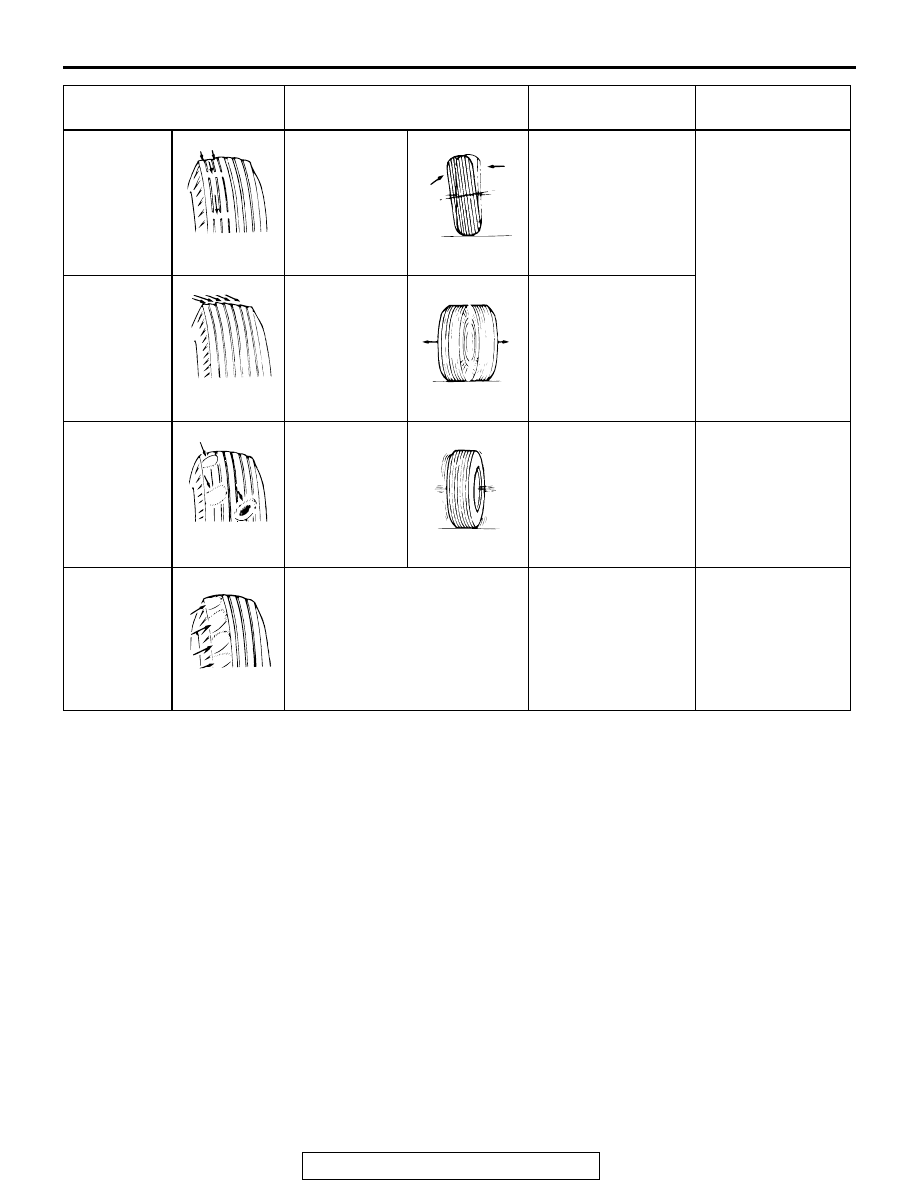Mitsubishi Montero (2002-2004). Manual - part 415

WHEEL AND TIRE DIAGNOSIS
TSB Revision
WHEEL AND TIRE
31-3
Wear on one
side
Excessive
camber
Check the camber.
Refer to GROUP
33A, On-vehicle
service
− Front
wheel alignment
check and
adjustment
.
Feathered
edge
Incorrect toe-in
Adjust the toe-in.
Bald spots
Unbalanced
wheel
Balance the wheels.
−
Scalloped
wear
Lack of rotation of tires or worn
or out-of-alignment suspension
Rotate the tires, and
check the front
suspension
alignment.
Refer to GROUP
33A, On-vehicle
service
− Front
wheel alignment
check and
adjustment
.
SYMPTOM
PROBABLE CAUSE
REMEDY
REFERENCE
PAGE
ACX00928 AB
ACX00929 AB
ACX00930AB
ACX00931AB
ACX00932AB
ACX00933 AB
ACX00934